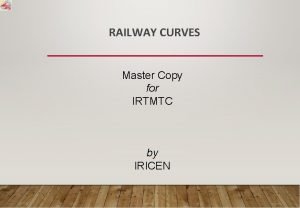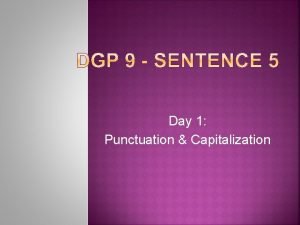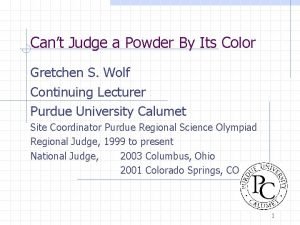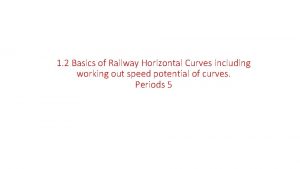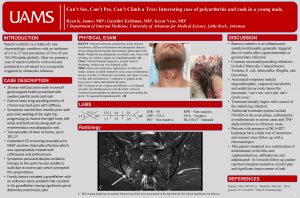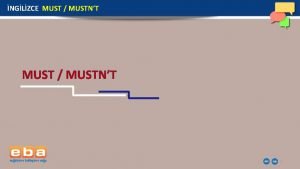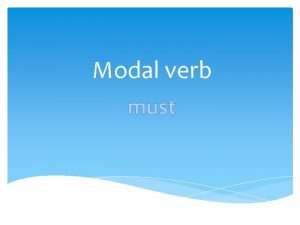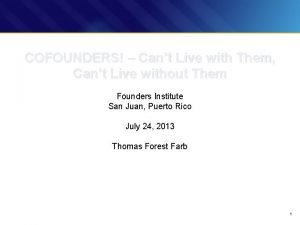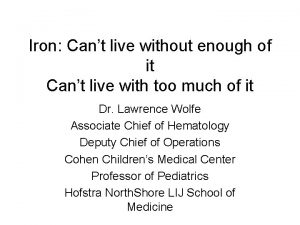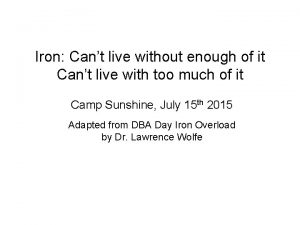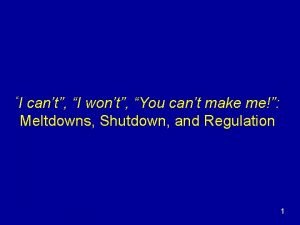MUST JUSTIFY 2012 Revised q 21 Cant justify

















- Slides: 17

MUST JUSTIFY 2012 Revised q 21.

Can’t justify a wrong answer!

Ø There a variety of ways a candidate could use to justify that it is more likely for the ball to hit the tree, but all of them require precision in the description. Ø For example, an acceptable answer could be ‘On its way up, the ball’s vertical velocity would decrease more quickly than before and so the maximum height would be less than before. This would mean that it is more likely for the ball to hit the tree’. Ø Markers often read very vague statements such as ‘The ball’s speed would decrease and so it would not reach its maximum height’. Even when air resistance is ignored the ball’s speed decreases (due to gravitational effects). (This answer does not make clear that the vertical component of velocity has decreased more rapidly than before. ) The ball always reaches a maximum height in its flight. (This answer does not make clear there is a lower maximum height when air resistance is taken into account. )

2012 Revised q 25.

In part (a) the candidate is asked to calculate the average force exerted by the brakes.

In part (b) the candidate is asked to state and justify the effect on the braking force when the mass of the car is less than before. No statement answering the question, no marks can be awarded. A more full answer would Ø Identify what is not changing. (Same starting speed; same stopping distance; same force of friction) Ø Identify what is changing. (Mass of car is less) Ø Write down appropriate equation(s). (Ek = ½mv 2; W = Fd) Ø Write about the effect of the changes with reference to the equation(s). (mass less; Ek less; W less therefore F less. If F is less and force of friction unchanged then braking force less.

2012 Revised q 27.

Despite this question clearly requiring that the answer had to be justified with a calculation, there were a few candidates who failed to show any calculation. Future candidates need to be aware that no marks can be awarded for such an answer.

2012 Revised q 32.



Ø Candidates were asked how the capacitance of the new capacitor compared with that of the original 220 μF capacitor. They were told that they ‘must justify’ their answer. Any answer that made no attempt at a justification could not be awarded any marks. However, an attempt at an explanation which does not contain wrong physics gives access to the first mark.

PA’s Comments: Ø Some candidates wrote ‘the new capacitor is smaller’. This shows a lack of precision in the use of language since it refers to the physical size of the capacitor, which bears no relationship to its capacitance. Ø The question shows graphs for the two capacitors discharging. Some candidates discussed how the capacitors were charging — this could not be accepted as appropriate.

There were frequent other examples of candidates using wrong/inappropriate terminology in their answers. Examples are: Ø ‘current is being lost quicker with the second capacitor’ and ‘the original capacitance was better’. Ø Some candidates made a correct statement such as ‘the second capacitor discharges quicker than the first’, but they failed to answer the question as they did not say how the two capacitances compared to each other. Must make an appropriate statement before any marks can be awarded. Ø A significant number of candidates attempted to answer this question using the relationship Q = It, stating that ‘the current is constant’. This statement is wrong physics.

2009 Revised q 24.

In part (a) the candidate is asked to calculate the lost volts and the internal resistance when the resistance of R is 1· 5 Ω.

In part (b) the candidate is asked to state and justify the effect of increasing the resistance of R. No statement answering the question, no marks can be awarded. A more full answer would Ø Identify what is not changing. (The internal resistance and the e. m. f. ) Ø Identify what is changing. (The resistance of the resistor is increasing) Ø Write down appropriate equation(s). (E = IR + Ir & Vlost = Ir Ø Write about the effect of the changes with reference to the equation(s). (E = I(R + r) / Current decreases; Vlost = I r / Lost volts decreases)
 Can't manage what you don't measure
Can't manage what you don't measure You can't improve what you don't measure quote
You can't improve what you don't measure quote Real vs ideal self examples
Real vs ideal self examples I must become less
I must become less Why cant we see atoms
Why cant we see atoms Versine of curve
Versine of curve Cant cove base
Cant cove base Eric cant
Eric cant Jeb likes cars but he can't drive yet
Jeb likes cars but he can't drive yet If you cant measure it you can't manage it
If you cant measure it you can't manage it Bleeding
Bleeding Close your eyes imagine that you are the protagonist
Close your eyes imagine that you are the protagonist O doamne mare versuri
O doamne mare versuri Wooden parapet wall
Wooden parapet wall I can could speak english
I can could speak english Cant judge a powder
Cant judge a powder I cant count
I cant count Rail cant
Rail cant





